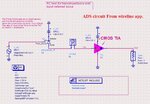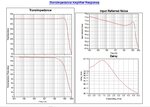noor84
Member level 5
I want to make a simulation of Transimpedance amplifier circuit to measure the dB(TIA)and voltage gain using Advance Design System(ADS simulator).
Please, may you advise me if my circuit connection(in attachments) is right or not?

Please, may you advise me if my circuit connection(in attachments) is right or not?
Last edited by a moderator:




